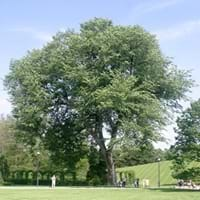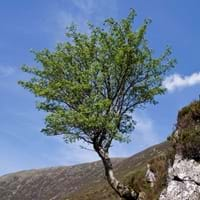Life Span
Perennial
Perennial
Origin
North America
Asia, Europe, Northern Africa
Types
Water elm
Sorbus aucuparia fenenkiana, Sorbus aucuparia glabrata, Sorbus aucuparia praemorsa
Number of Varieties
Not Available
Habitat
Floodplains, Hillside, stream banks, Swamps, Upland
Temperate Regions
USDA Hardiness Zone
3-9
3-7
Sunset Zone
1a, 1b, 2a, 2b, 3a, 3b, 4, 5, 6, 7, 8, 9, 10, 11, 14, 15, 16, 17, 18, 19, 20, 21
A1, A2, A3, 1a, 1b, 2a, 2b, 3a, 3b, 4, 5, 6, 7, 8, 9, 10, 14, 15, 16, 17
Habit
Upright/Erect
Oval or Rounded
Flower Color Modifier
Bicolor
Bicolor
Fruit Color
Tan
Orange, Yellow
Leaf Color in Spring
Light Green
Green
Leaf Color in Summer
Dark Green
Green
Leaf Color in Fall
Light Yellow
Dark Green
Leaf Color in Winter
Not Available
Dark Green
Leaf Shape
Oblique base
Pinnate
Plant Season
Spring, Summer, Fall, Winter
Spring, Fall
Sunlight
Full Sun
Full Sun, Partial Sun
Type of Soil
Loam
Clay, Loam, Sand
The pH of Soil
Acidic, Neutral
Acidic, Neutral
Soil Drainage
Average
Average
Bloom Time
Early Spring
Late Spring
Tolerances
Cold climate, Drought, Pollution, Salt
Not Available
Where to Plant?
Ground
Ground
How to Plant?
Rooted stem cutting, Seedlings, Stem Planting
Budding, Grafting, Stem Cutting
Plant Maintenance
Low
Medium
Watering Requirements
Average Water Needs, Requires regular watering, Requires watering in the growing season, Water Deeply
Do Not over Water, Water in the early morning hours
In Summer
Ample Water
Lots of watering
In Spring
Average Water
Moderate
In Winter
Average Water
Average Water
Soil pH
Acidic, Neutral
Acidic, Neutral
Soil Type
Loam
Clay, Loam, Sand
Soil Drainage Capacity
Average
Average
Sun Exposure
Full Sun
Full Sun, Partial Sun
Pruning
Remove dead branches, Remove dead or diseased plant parts, Remove hanging branches
Remove dead or diseased plant parts, Trim each shoot back to the first set of leaves
Fertilizers
Fertilize every year, fertilize in growing season, Nitrogen, Phosphorous, Potassium
All-Purpose Liquid Fertilizer, Doesn't require fertilization when grown in rich soil
Pests and Diseases
Bark beetles, Beetles, Borers, Mites, Moth, Red blotch, Scale
Aphids, blister mites, Canker, fireblight, sawflies, Silver leaf
Plant Tolerance
Cold climate, Drought, Salt
Not Available
Flowers
Insignificant
Yes
Flower Petal Number
Single
Single
Foliage Texture
Medium
Fine
Foliage Sheen
Matte
Matte
Attracts
Not Available
Birds
Allergy
allergic reaction, Asthma
Anxiety, Depression, High blood cholestrol, High blood pressure, Pain, Stress
Aesthetic Uses
Landscape Designing
along a porch, deck or patio, Showy Purposes
Beauty Benefits
Not Available
Not Available
Environmental Uses
Absorbs greenhouse gases, Absorbs huge amounts of CO2, Air purification, Food for birds, Forms dense stands, Nesting sites for birds, Prevent Soil Erosion, Shelter for wildlife, Wildlife
Air purification, Food for birds, Shadow Tree
Medicinal Uses
Antispasmodic, Astringent
Diarrhea, Inflammation, Laxative, Urinary tract problems, Vitamin C
Part of Plant Used
Bark, Stem, Tree trunks, Wood
Bark, Fruits, Wood
Other Uses
Used as firewood, Used for woodware, Used in biomass, Used in construction, Used in Furniture, Used in paper industry, Used in pulpwood and lumber production, Wood is used for making furniture, Wood is used for ship building, Wood is used fore making tools, Wood is used in construction, Wood log is used in making fences
Used for its medicinal properties, Used for woodware
Used As Indoor Plant
No
No
Used As Outdoor Plant
Yes
Yes
Garden Design
Feature Plant, Shade Trees, Street Trees
Feature Plant, Mixed Border, Topiary / Bonsai / Espalier
Botanical Name
ULMUS americana
Sorbus aucuparia
Common Name
American Elm
Rowan, Mountain ash
In Hindi
अमेरिकी एल्म
रोवाण पौधा
In German
amerikanische Ulme
Rowan Tree
In French
orme d'Amérique
Rowan Tree
In Spanish
olmo americano
Rowan Tree
In Greek
American Elm
Rowan Tree
In Portuguese
olmo americano
Árvore de Rowan
In Polish
Amerykański wiązu
Rowan Tree
In Latin
Latin ulmo
Rowan ligno
Phylum
Magnoliophyta
Magnoliophyta
Class
Magnoliopsida
Magnoliopsida
Clade
Angiosperms, Eudicots, Rosids
Angiosperms, Eudicots, Rosids
Tribe
Not Available
Not Available
Subfamily
Not Available
Not Available
Number of Species
Not Available
Season and Care of Elm and Rowan Tree
Season and care of Elm and Rowan Tree is important to know. While considering everything about Elm and Rowan Tree Care, growing season is an essential factor. Elm season is Spring, Summer, Fall and Winter and Rowan Tree season is Spring, Summer, Fall and Winter. The type of soil for Elm is Loam and for Rowan Tree is Clay, Loam, Sand while the PH of soil for Elm is Acidic, Neutral and for Rowan Tree is Acidic, Neutral.
Elm and Rowan Tree Physical Information
Elm and Rowan Tree physical information is very important for comparison. Elm height is 1,830.00 cm and width 910.00 cm whereas Rowan Tree height is 1,000.00 cm and width 800.00 cm. The color specification of Elm and Rowan Tree are as follows:
Care of Elm and Rowan Tree
Care of Elm and Rowan Tree include pruning, fertilizers, watering etc. Elm pruning is done Remove dead branches, Remove dead or diseased plant parts and Remove hanging branches and Rowan Tree pruning is done Remove dead or diseased plant parts and Trim each shoot back to the first set of leaves. In summer Elm needs Ample Water and in winter, it needs Average Water. Whereas, in summer Rowan Tree needs Lots of watering and in winter, it needs Average Water.





